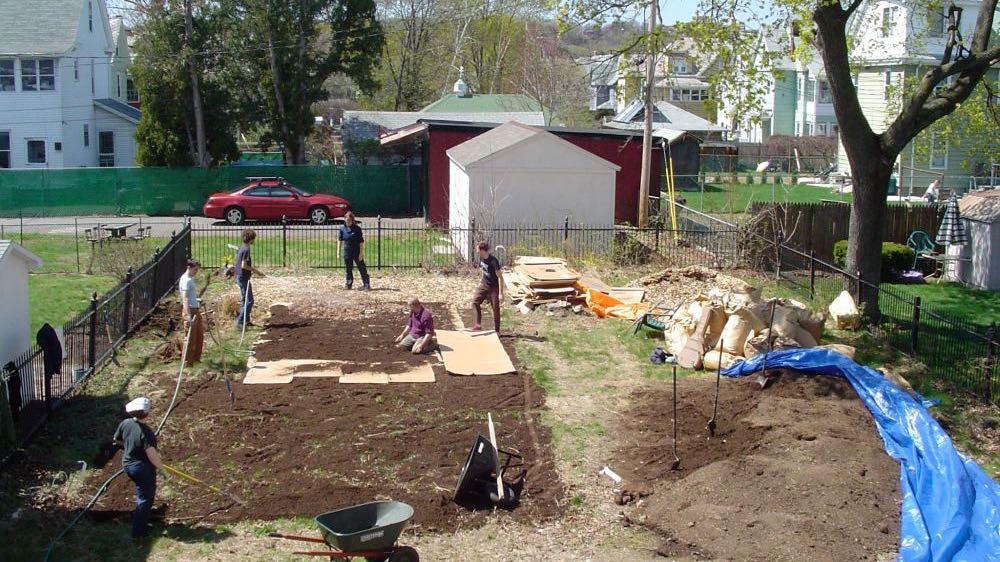This farmer’s answer to climate change? Plant crops that trap carbon.
This is a view of Eric Toensmeier's backyard farm.
While discussions about climate change usually center on reducing greenhouse gas emissions, Eric Toensmeier is focused on the other side of the equation: how to capture the carbon dioxide that's already in the atmosphere.
And he thinks the answer might be in his backyard garden.
At one-tenth of an acre, Toensmeier’s garden in Holyoke, Massachusetts, is not a large space. But with 300 varieties of perennial crops, his experiments on growing them in different configurations — to increase nutrients, slow erosion, provide cover from the elements and capture carbon — make it a valuable laboratory.
The techniques he has refined are the subject of his new book, "The Carbon Farming Solution." Put simply, the practice of "carbon farming" is agriculture that captures carbon in the trees, plants and biomass of farmed crops, with the goal of curbing global warming.
In warm parts of the world, trapping carbon in crops is much easier, Toensmeier said. Some studies have even found tropical gardens can hold more carbon than nearby forests.
Without the advantage of tropical climates, farmers have to think differently if they want to sequester more carbon. Currently, large-scale commercial agriculture mostly grows commodity crops, like corn and soybeans, which are planted annually.
Toensmeier said this approach produces a lot of food in a relatively small space, which minimizes deforestation. But at the same time, it relies on chemicals that can be harmful to the environment. It also fails to capture additional carbon.
Toensmeier admits it is tough to persuade farmers they should spend money on their operations to help slow climate change. When it comes to global warming, he said, “In the United States a lot of our farmers don’t think it’s a real thing at all."
“But, when you talk about the particular practices" that can help address the problem, he said, “many of [the farmers] are very excited about them and want to do them.”
And how much of a difference can be made by changing the way we farm and garden?
“We ran numbers at one point on our backyard,” Toensmeier said, and estimated the garden “offsets the emissions of one American adult in one year."
“If all of us did this in our gardens it wouldn’t be enough to do the trick,” he said, “but it would be a huge contribution.”
For gardeners and farmers interested in carbon farming, Toensmeier recommends growing more perennial crops and mulching instead of tilling. He pointed out that by growing your own food, you are already cutting emissions — by reducing the distance it travels from the soil to your plate.
This article is based on an interview that aired on PRI’s Living on Earth with Steve Curwood.
We want to hear your feedback so we can keep improving our website, theworld.org. Please fill out this quick survey and let us know your thoughts (your answers will be anonymous). Thanks for your time!
